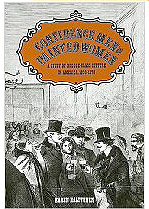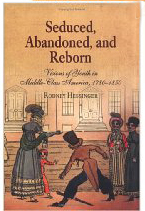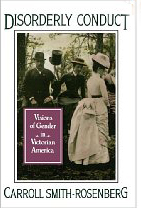Ship's StoreThe Culture of Early America
° 49ers 'Round The Horn ° Australia ° California (Fiction) ° Captains ° Children ° Chinese in San Francisco ° Culture of Early America ° Geneaology ° Merchants ° Passages ° Passengers ° Seaports ° San Francisco History ° Ships and Shipping ° Tales of the Sea (Fiction) ° Naval History ° Sea Politics ° Spanish in California ° Women at Sea
Books and images are also throughout the site under various topics.
|
|
 |
Confidence Men and Painted Women: A Study of Middle-class Culture in America, 1830-1870 (Yale Historical Publications) |
 |
Seduced, Abandoned, and Reborn: Visions of Youth in Middle-Class America, 1780-1850 (Early American Studies) Rodney Hessinger |
 |
Disorderly Conduct: Visions of Gender in Victorian America (Galaxy Books) Carroll Smith-Rosenberg |
 A Social and Cultural History of the Jews of the San Francisco Bay Area Fred Rosenbaum |
|
The Kings of Wall Street. August Belmont, original name August Schoenberg (born December 8, 1816, Alzey, Rhenish Prussia [now Germany] died November 24, 1890, New York, New York, U.S.), German-born American banker, diplomat, political leader, sportsman, and a patron of the arts who was a defining figure of America s Gilded Age. Belmont, one of the richest Americans of his day, was a fixture of New York's high society, and his lavish lifestyle reportedly inspired the character of Beaufort in Edith Wharton's The Age of Innocence (1920). He was also a prominent figure in the establishment of Thoroughbred horse racing in the United States as a major financer of the first Belmont Stakes, part of the trio of races that compose the American Triple Crown. The event was subsequently named in his honour. | |
 |
Port Jews: Jewish Communities in Cosmopolitan Maritime Trading Centres, 1550-1950 (Parkes-Wiener Series on Jewish Studies) David Cesarani |
| Contraband Cowboys
Jim Christina This is the story of two brothers, Bountiful Jim Lent and Lewis Bishop. Both hard working hands but with an awful story to tell. Lewis' direct family including his sister, her husband, their baby and his father are killed in a raid by the hooded citizens known as the Nightriders, a holdout of the old slave hunters and killers during the slavery period. The raid ignites what would become to be known as the Williamson Valley War and would drag in some of the territory's toughest fighters and gunmen in a last ditch effort too reclaim what rightly belongs to the two brothers and their neighbors. |
|
Filibusters and Financiers: the Story of William Walker and His Associates Bernard Bailyn gives a compelling account of the first great transit of people from Britain, Europe, and Africa to British North America, their involvements with each other, and their struggles with the indigenous peoples of the eastern seaboard. They were a mixed multitude from England, the Netherlands, the German and Italian states, France, Africa, Sweden, and Finland. They moved to the western hemisphere for different reasons, from different social backgrounds and cultures, and under different auspices and circumstances. Even the majority that came from England fit no distinct socioeconomic or cultural pattern. They came from all over the realm, from commercialized London and the southeast; from isolated farmlands in the north still close to their medieval origins; from towns in the Midlands, the south, and the west; from dales, fens, grasslands, and wolds. They represented the entire spectrum of religious communions from Counter-Reformation Catholicism to Puritan Calvinism and Quakerism. They came hoping to re-create if not to improve these diverse lifeways in a remote and, to them, barbarous environment. But their stories are mostly of confusion, failure, violence, and the loss of civility as they sought to normalize abnormal situations and recapture lost worlds. And in the process they tore apart the normalities of the people whose world they had invaded. Later generations, reading back into the past the outcomes they knew, often gentrified this passage in the peopling of British North America, but there was nothing genteel about it. Bailyn shows that it was a brutal encounter brutal not only between the Europeans and native peoples and between Europeans and Africans, but among Europeans themselves. All, in their various ways, struggled for survival with outlandish aliens, rude people, uncultured people, and felt themselves threatened with descent into squalor and savagery. In these vivid stories of individual lives some new, some familiar but rewritten with new details and contexts Bailyn gives a fresh account of the history of the British North American population in its earliest, bitterly contested years. |
|




 Copyright © 1998-2017.
Copyright © 1998-2017.